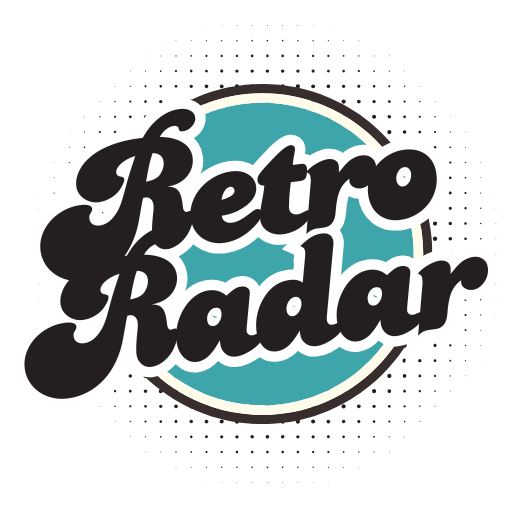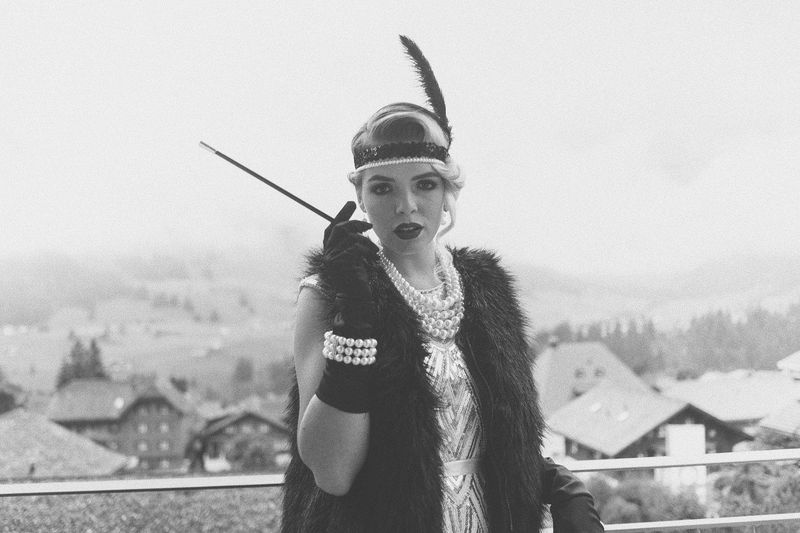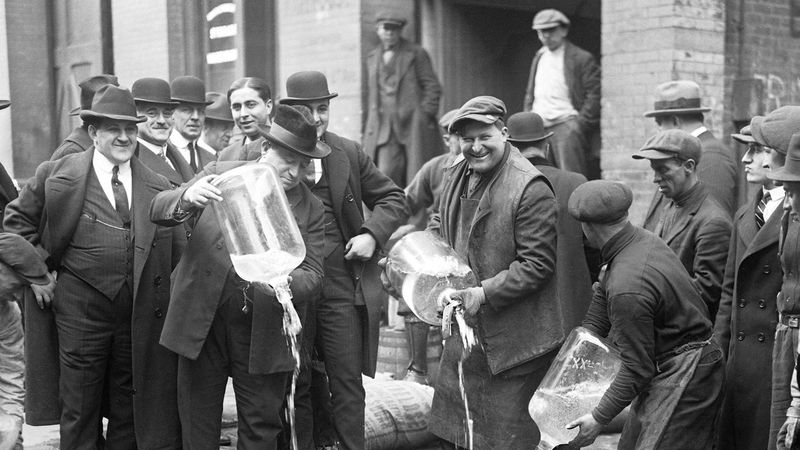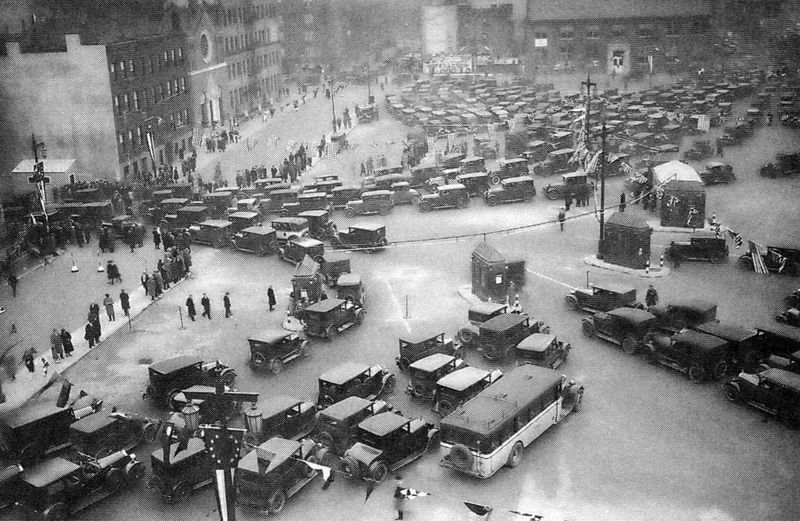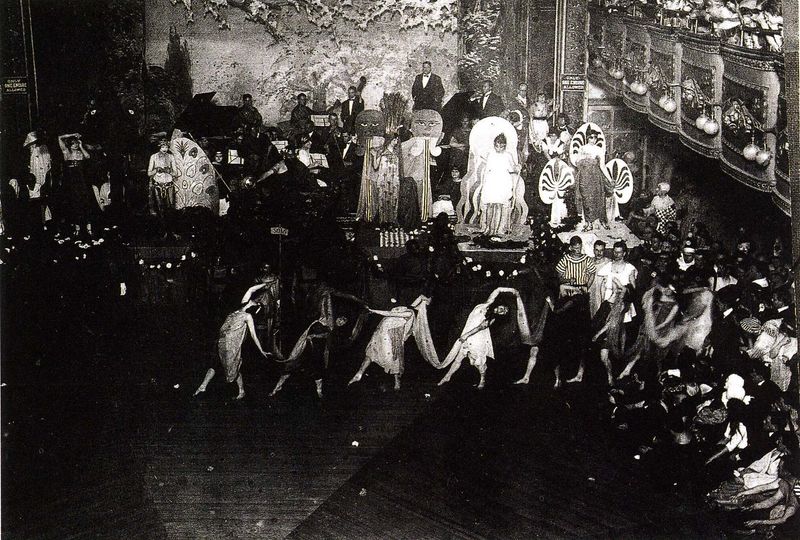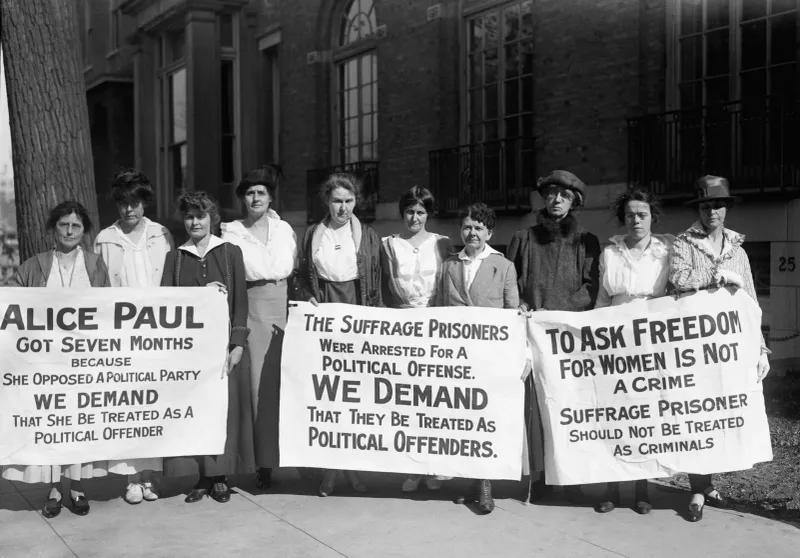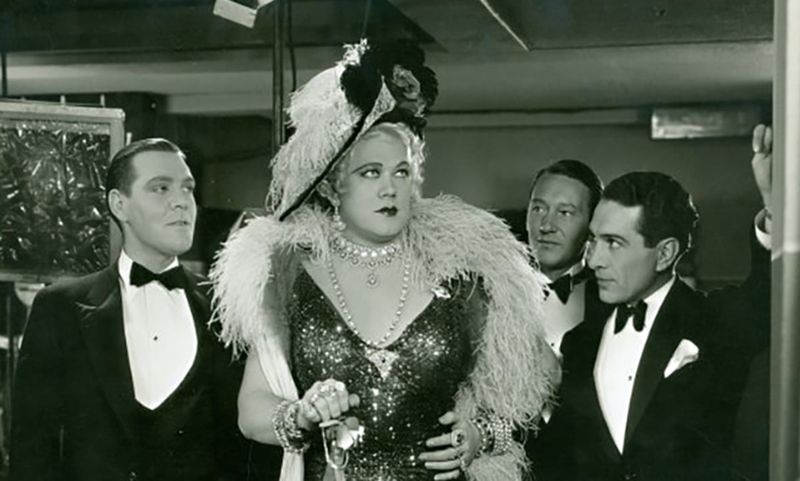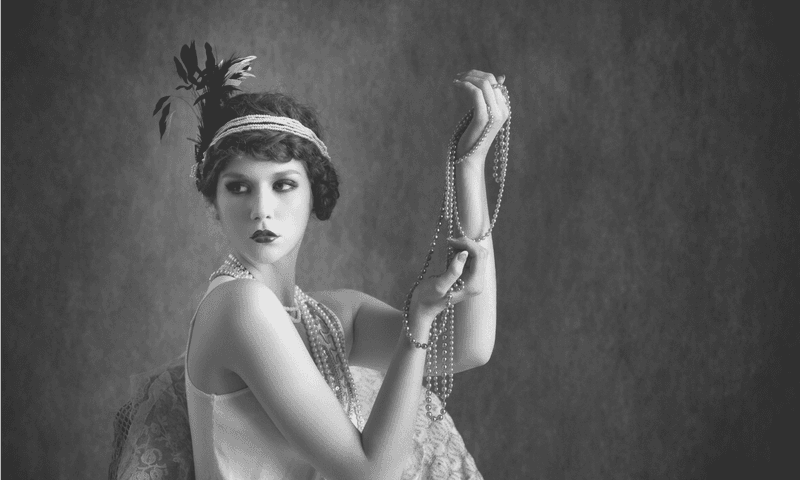15 Vintage Pictures That Reveal What The Roaring Twenties Were Really Like
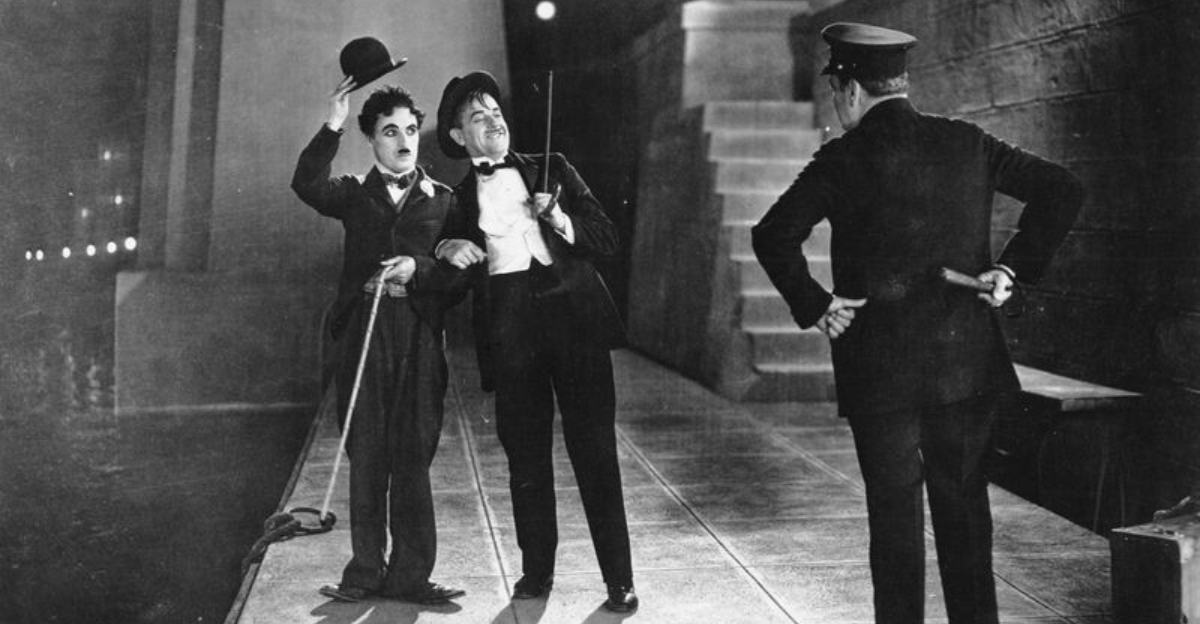
Buckle up, history buffs and time travelers! We’re cranking up the jazz, slipping on our best flapper dresses and pinstripe suits, and diving headfirst into one of the most electrifying decades in history—the Roaring Twenties!
This was an era of glitz, glamour, and groundbreaking change, where the music was loud, the skirts were short, and the stock market soared (until, well… you know).
In this blog post, we’re bringing you 15 jaw-dropping images that perfectly capture the essence of this dynamic decade. From the underground speakeasies where bootleggers ruled the night, to the dance floors packed with Charleston-loving rebels, you’ll see how the 1920s redefined culture, fashion, and technology.
Expect laughter, fascinating tidbits, and maybe even a few surprises as we transport you to an era where jazz was king, silent films made stars, and the world felt like it was dancing on the edge of something new. Let’s go!
1. Flapper Fashion Extravaganza
The flapper fashion phenomenon was all the rage in the roaring twenties. Picture a young woman defying traditional norms with her bobbed hair and fringed dress. She’s the life of the party, moving to jazz beats like there’s no tomorrow.
Flappers were known for their liberated lifestyle and bold fashion choices. Their dresses were often shorter, embracing a more relaxed and youthful look. Accessories included long strings of pearls and elegant headbands.
This style wasn’t just a fashion statement – it was a bold declaration of independence and a dance floor revolution that redefined womanhood.
2. Jazz Age Jubilee
Jazz music was the heartbeat of the 1920s, infusing life into every corner of society. Bands like Duke Ellington’s orchestra brought new rhythms to clubs across America, creating an atmosphere of excitement.
The jazz scene was a melting pot of cultures, breaking barriers and bringing people together. The lively tunes encouraged spontaneous dances and joyous celebration.
In jazz clubs, the air was filled with the sound of trumpets and saxophones, and the vibrant spirit of the age. Jazz wasn’t just music – it was a movement that encapsulated the freedom and creativity of the times.
3. Prohibition Paradox
The 1920s brought the Prohibition era, a time when alcohol was banned but never harder to find. Speakeasies popped up everywhere, hidden behind ordinary facades, accessible through secret knocks and passwords.
Inside, people indulged in the forbidden pleasure of jazz and cocktails. The irony of Prohibition was that it fueled more creativity and resourcefulness in the pursuit of pleasure.
While the law said “no,” the spirit of the twenties said “yes.” Speakeasies were the playgrounds of a generation that refused to give up its right to party, embracing the thrill of the forbidden.
4. Automobile Abundance
The automobile was the emblem of freedom in the 1920s, with Henry Ford’s Model T leading the charge. Streets were bustling with these new machines, and owning a car became a symbol of status and independence.
The automobile industry fueled economic growth, creating jobs and new opportunities. Road trips became a popular pastime, offering a sense of adventure and exploration.
Cars changed the landscape of American life, making travel more accessible and connecting distant places. The hum of engines and honking horns became the soundtrack of a decade that embraced mobility.
5. Art Deco Delight
Art Deco was the architectural and artistic style that defined the 1920s. Its bold geometric shapes and vibrant colors decorated everything from buildings to jewelry, embodying the optimism of the era.
Cities like New York and Chicago saw skyscrapers rising, celebrating modernity and progress. Theaters and hotels were adorned with lavish Art Deco details, creating a sense of luxury.
This style was more than an aesthetic – it was a reflection of society’s belief in innovation and the future. Art Deco was a visual celebration of a decade that dared to dream big and reach for the stars.
6. Silent Film Spectacle
Silent films were the superstars of cinema in the 1920s, captivating audiences with their expressive performances and dramatic flair. Actors like Charlie Chaplin became household names.
The theaters were grand, with ornate designs and opulent interiors. Movie nights were a social event, bringing people together for entertainment and escapism.
Without spoken dialogue, silent films relied on exaggerated expressions and gestures, creating a universal language of emotion. The silver screen was a magical portal that transported audiences to new worlds, making the roaring twenties a golden age of film.
7. Harlem Renaissance Revelry
The Harlem Renaissance was a cultural explosion that celebrated African-American art, music, and literature. Harlem streets were alive with creativity, becoming a hub for writers, musicians, and intellectuals.
Jazz music, poetry, and art flourished, with figures like Langston Hughes and Duke Ellington leading the way. The energy was palpable, as creativity and cultural pride filled the air.
This movement challenged stereotypes and redefined African-American identity, making a lasting impact on American culture. The Harlem Renaissance was a vibrant chapter in the story of the roaring twenties, filled with voices that still resonate today.
8. Speakeasy Swing
Speakeasies were the hidden gems of the Prohibition era, where the dance floors were alive with the sound of swing music. These clandestine clubs were a safe haven for those seeking joy and rhythm.
Dancers moved with grace and energy, their feet tapping away to the infectious beats. The air was electric, filled with laughter and the clinking of glasses.
Swing music created a sense of unity, transcending social barriers and bringing people together. The speakeasy was more than a place – it was an experience, a celebration of freedom and a dance that defined a generation.
9. Sports Star Surge
The 1920s was a decade of sports heroes, with figures like Babe Ruth capturing the imagination of fans. Baseball games were lively events, bringing communities together.
Stadiums echoed with cheers and applause as athletes achieved legendary feats. Sports became a part of the cultural fabric, offering both entertainment and inspiration.
The passion for sports was contagious, uniting people from all walks of life. The decade saw a surge in athletic talent, and the heroes of the field became symbols of American pride and spirit, making the roaring twenties a golden era for sports.
10. Women’s Rights Rally
The 1920s marked significant progress in women’s rights, with the suffrage movement gaining momentum. Women took to the streets, demanding equality and the right to vote.
These rallies were powerful displays of unity and determination, as women from diverse backgrounds joined forces to fight for their rights. The decade saw a shift in societal roles.
Victory came with the ratification of the 19th Amendment, granting women the right to vote. The women’s rights movement of the 1920s paved the way for future generations, leaving an indelible mark on history and igniting a push for change.
11. Dance Craze Delight
Dance halls were the heartbeat of 1920s social life, where the latest dance crazes like the Charleston took center stage. Feet shuffled and bodies swayed in rhythm, creating a lively spectacle.
Couples danced with enthusiasm, their movements synchronized to the catchy beats of jazz. Dance halls were buzzing with energy and excitement.
These venues were more than just places to dance – they were social melting pots where people connected and shared joy. The dance crazes of the roaring twenties were a testament to the era’s exuberance and a celebration of life’s simple pleasures.
12. Radio Revolution
The radio revolution of the 1920s transformed how people consumed information and entertainment. Families gathered around radio sets, tuning in to music, news, and drama.
Radio brought the world into living rooms, connecting people to events and cultures far beyond their reach. It was a new form of storytelling and communication.
The airwaves were alive with variety, from jazz music to presidential addresses. The radio was a technological marvel that changed daily life, making the roaring twenties a decade of innovation and connectivity like never before.
13. Fashion Forward Flappers
Flappers were the fashion icons of the 1920s, with their bold and carefree style. They embraced short dresses, bobbed hairstyles, and an attitude that said they were here to have fun.
These women challenged the status quo, breaking away from traditional fashion norms and embracing new trends. Their confidence was reflected in their style.
Flapper fashion wasn’t just about clothes – it was a statement of independence and rebellion. The streets were alive with their vibrant presence, making the roaring twenties a decade of fashion-forward thinking and fearless expression.
14. Aviation Adventure
The aviation industry took flight in the 1920s, with pioneers like Charles Lindbergh capturing the world’s imagination. Airplanes became symbols of adventure and progress.
Aviators pushed the boundaries of what was possible, soaring to new heights and breaking records. The sky was no longer the limit.
Aviation opened up new horizons, making travel faster and more accessible. It was an era of daredevils and dreamers, embracing the thrill of flight. The aviation achievements of the roaring twenties laid the groundwork for future exploration and innovation in the skies.
15. Cultural Crossover
The roaring twenties was a time of cultural crossover, where diverse communities came together to share their heritage and traditions. Cities became melting pots of music, food, and art.
This cultural exchange enriched society, creating a tapestry of experiences and influences. From jazz to cuisine, the blending of cultures was evident.
The decade celebrated diversity, breaking down barriers and fostering understanding. The cultural crossover of the 1920s was a significant force in shaping modern society, making the era not just a time of change but a celebration of unity and diversity.
